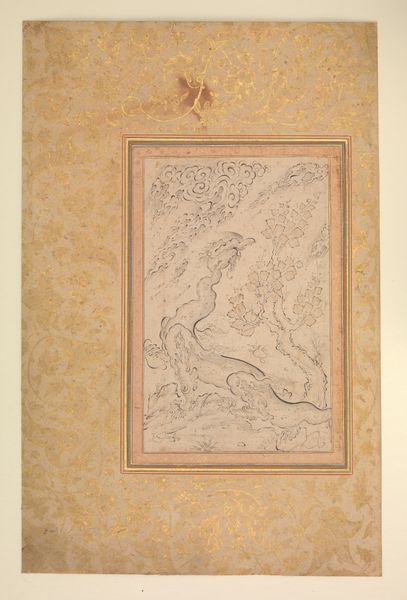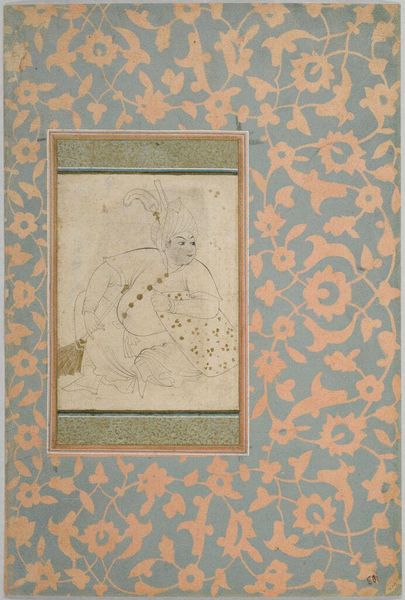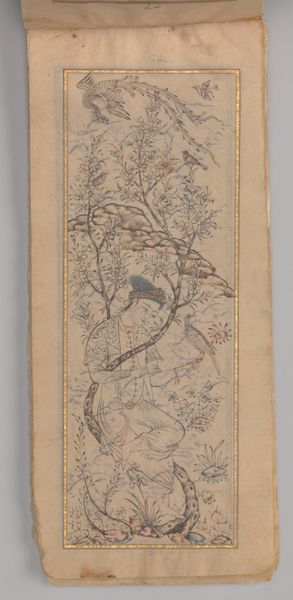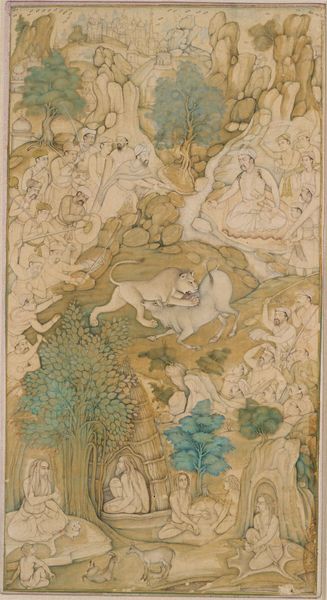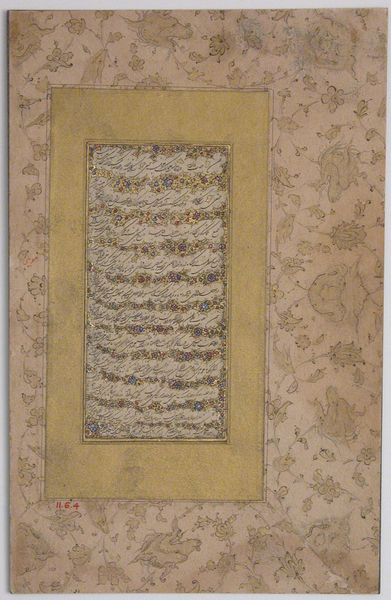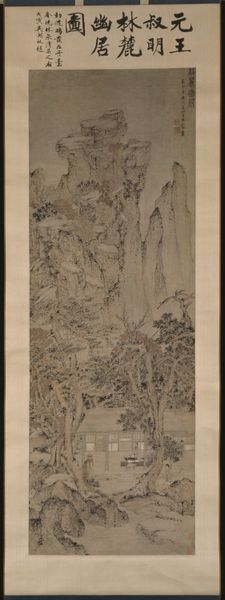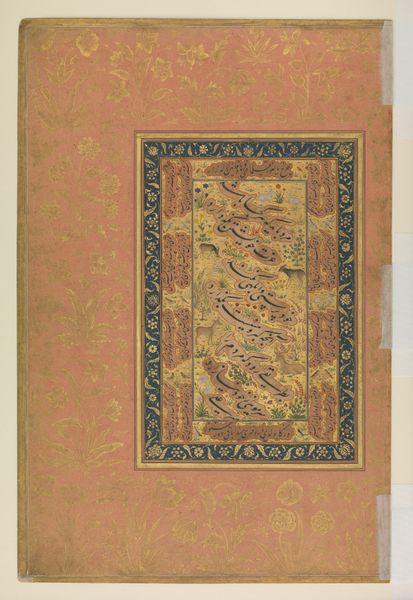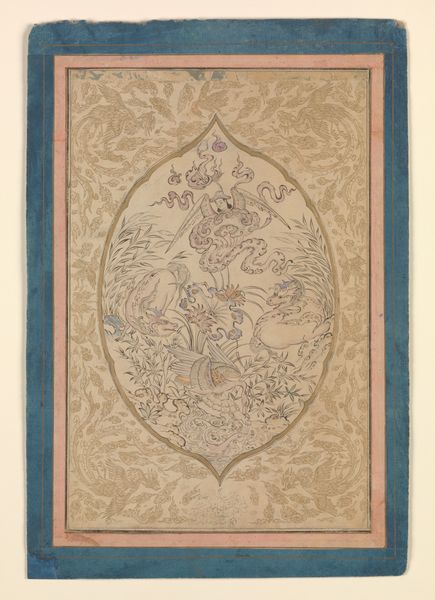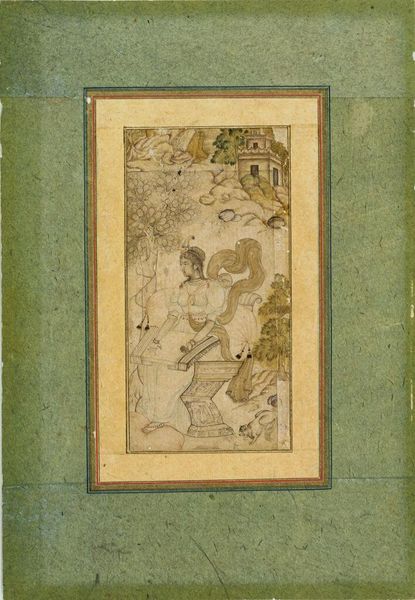
drawing, paper, ink
#
drawing
#
landscape
#
bird
#
paper
#
ink
#
men
#
islamic-art
#
miniature
Dimensions: H. 6 3/4 in. (17.2 cm) W. 3 1/4 in. (8.3 cm)
Copyright: Public Domain
Curator: Here we have “Youthful Falconers in a Landscape,” an ink drawing on paper attributed to Vali Jan, dating from the latter half of the 16th century. It resides here at the Metropolitan Museum of Art. Editor: The piece feels…incomplete, almost ghostly. The delicate ink work outlines the scene without fully committing to it. There’s a melancholic stillness to the landscape despite the falconry taking place. Curator: I find that lack of color fascinating. In Islamic miniature painting, color is often so vibrant, so central to the work. Here, its absence encourages us to consider what meaning is carried through the line itself. Look how precisely the artist renders the details of the falcon’s nest, a potent symbol of home and nature’s cycle. Editor: Indeed. Falconry itself has always represented a complex negotiation between humans and the natural world—control and respect intertwined. By stripping away the color, is the artist commenting on the ephemeral nature of such power? The men almost fade into the background, figures within, not masters of, the landscape. Curator: I agree. The historical context would certainly support this reading. These miniatures often served as illustrations within manuscripts viewed by elites. A more subdued palette might suggest introspection, perhaps a quiet reflection on their place in a grander scheme. The blank background urges a deeper contemplation of symbols and meanings. Editor: I'm also drawn to how deliberately Vali Jan positions figures and details within the composition. Note that tree, and the location of that small waterfall at its base – like something out of an old Taoist landscape. Was the intent of these works always to flatter, or to also communicate cultural values about status and virtue through these figures’ interaction with their environment? Curator: It’s a reminder that courtly art isn't always simply about celebrating power, but often subtly reinforcing it. We see those reminders in miniature arts even today, especially regarding wealth. The very choice of materials – fine paper and ink, the artist's skill – spoke of privilege. Editor: The restraint intrigues me the most, then. Instead of ostentatious color and lavish display, we are asked to examine something more…elusive about that time period and culture. Curator: I agree completely. The elegance lies not in what's shown, but what's implied, echoing through the absence of color.
Comments
No comments
Be the first to comment and join the conversation on the ultimate creative platform.
